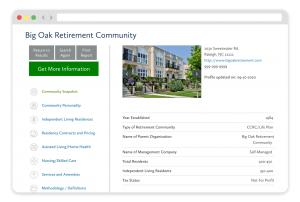As older adults ponder various senior living options, it can be helpful to understand an important piece of legislation that affects many 55+ communities: the Housing for Older Persons Act (HOPA) of 1995. This law was created to protect age-restricted retirement communities that are designed specifically for older adults while maintaining certain standards of fairness and access.
If you are considering a move to an age-restricted retirement community, understanding the key points of HOPA is essential. Let’s take a closer look at some of HOPA’s provisions and what they could mean for you as a prospective resident.
What is HOPA?
The Housing for Older Persons Act (HOPA) of 1995 is an amendment to the Fair Housing Act, which was Title VIII of the landmark Civil Rights Act of 1968 that prohibits discrimination in housing based on race, color, religion, sex, national origin, disability, and/or “familial status,” meaning residential communities cannot discriminate against families with children.
The 1995 addition of the HOPA amendment, however, provides exemptions to the Fair Housing Act’s familial status protection for residential communities that are specifically designed and operated to meet the needs of older adults. This exemption allows such communities to restrict their residents to those 55 years of age or older, provided that the community complies with certain eligibility criteria and guidelines.
>> Related: How Do Age Requirements Work at a CCRC or Other Senior Living Community?
What makes a housing community eligible for HOPA exemptions?
To be classified as “housing for older persons” under HOPA, a retirement or senior living community must meet these three primary criteria:
- 80% of a HOPA-eligible community’s units must be occupied by someone 55 or older.
The most important qualification for a community to be considered “age-restricted” under HOPA is that at least 80% of the community’s occupied residential units must be inhabited by people who are 55 years of age or older. This ensures that the community is primarily populated by older adults — not families with children. - The community must be specifically intended to serve older adults.
In addition to the age requirement, a HOPA-eligible community must have policies and/or programs in place that indicate it is intended to serve older adults. This might include services and amenities designed for older people such as handicap-accessible facilities, on-site healthcare services, and/or social, recreational, and educational activities aimed at older adults. - Procedures for age verification of residents must be in place.
Age verification is an important part of maintaining the integrity of the age-restricted community under HOPA. Therefore, the community must have a reliable system for verifying the age of its residents to ensure they meet the age 55+ requirement. This might include reviewing official documentation such as government-issued birth certificates, driver’s licenses, or IDs, or third-party affidavits. If a resident refuses to comply with the age verification request, the community can take further action, including conducting a thorough investigation to confirm whether or not the resident meets the age requirement.
>> Related: Senior Living Minimum Age Requirements Explained
HOPA community policies and intent
So, while a minimum age requirement for a certain percentage of residents is perhaps the most clear-cut, quantifiable feature of HOPA communities, the motivations behind establishing the community are also key. For a community to qualify under HOPA, it must show a clear intent to serve the needs of older adults. This is usually demonstrated through:
- Resident services and amenities: A HOPA-qualified community may offer services and amenities specifically geared towards older adults’ wellbeing and happiness, such as health and wellness programs, social events, transportation assistance, and other age-appropriate activities.
- Physical design features: HOPA communities often have physical features that cater to the health and safety needs of older adults as well. This might include design elements such as easy wheelchair accessibility, elevators, grab bars, and emergency call systems.
These services, amenities, and design elements show a HOPA-qualified community’s commitment to creating a living environment that is welcoming, safe, and comfortable for older adults. For prospective residents, understanding these aspects of HOPA qualification is essential in making sure a senior living community fits their needs and lifestyle preferences.
>> Related: Deciphering Between Over 55 Communities
Are there any exceptions permitted to the HOPA rules?
While HOPA provides flexibility for age-restricted housing, there are certain exemptions and clarifications regarding which communities can and cannot legally restrict age. A few key points include:
- Single resident rule: In some cases, a community may allow one individual under the age of 55 to live in a unit, provided they meet specific requirements. For example, in some instances, a spouse or partner under the age of 55 might be allowed to live with a resident who is 55 or older.
- Grandchildren and other family members: While HOPA allows senior living communities to limit residency to people 55 and older, some communities might allow grandchildren or other younger family members to live with residents in certain cases. One example of an exception might be an adult child who is under the age of 55 who is mentally or physically disabled and thus cannot live on their own. Exceptions would not be typical, however, and each community has its own policies regarding the permissibility of residents under the required age.
- Continuing care retirement communities: Continuing care retirement communities (CCRCs, also called life plan communities) may have more flexibility in terms of age requirements, especially as they offer a range of living situations, from independent living to assisted living and skilled nursing. However, these communities must still adhere to age-related HOPA standards for independent living areas.
Why does HOPA matter to prospective retirement community residents?
If you’re looking for a senior living community that caters exclusively to adults 55 and older, knowing that a community is compliant with HOPA reassures you that it is structured to serve your age group and that your living environment will be designed to meet the needs of older adults.
Additionally, understanding the rules and policies of HOPA can help you avoid potential confusion or issues later on. For example, many communities may have additional requirements regarding age verification, or certain facilities may be more or less restrictive about non-senior residents (like younger spouses or family members). Being aware of HOPA’s provisions helps ensure that you choose a community that aligns with your expectations and senior living preferences.
>> Related: Lifelong Learning Fosters Intergenerational Connections
Making an informed decision about 55+ communities
The Housing for Older Persons Act of 1995 plays an important role in the way retirement communities are structured and in the protections they offer to older adults. By ensuring that at least 80% of residents are over the age of 55, requiring age verification, and confirming the community’s intent to serve older adults, HOPA provides a framework that ensures a living environment tailored to older adults.
If you are considering moving to an age-restricted retirement community, it’s important to understand HOPA and keep these requirements in mind as they will impact the eligibility and policies of the communities you’re exploring.
You want to make an informed decision about your next chapter. Living in a HOPA-qualified community might be ideal for one person but not for another. Be sure to visit potential communities, ask questions about their policies, and consider whether the services, amenities, and lifestyle match your expectations for senior living and also will meet your age-related preferences and needs.
If you would like to learn more, this HOPA Q&A document (PDF) from the U.S. Department of Housing and Urban Development (HUD) may be helpful.

FREE Detailed Profile Reports on CCRCs/Life Plan Communities
Search Communities






